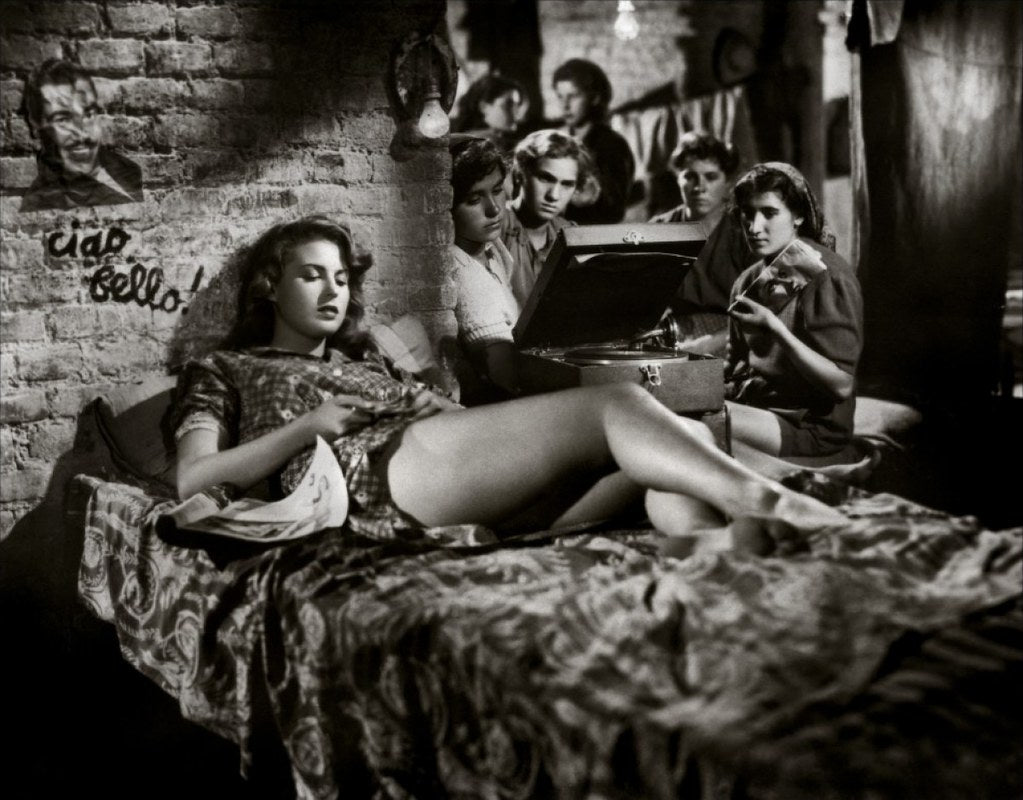
Italy. The mondines' bitter songs
The mondine could be found in the Po Valley in Northern Italy at the beginning of the 20th century. Every year, these seasonal workers came down to weed and pick rice in the plains of Piedmont and Lombardy. They were known for the songs they chanted to entertain themselves and endure the demands of this intense and poorly paid labour. In Italy, their struggles gave way to the development of trade unions, as well as birthing proletarian and feminist movements.
“If eight hours don’t seem like much to you, come down to the fields and you will understand the difference between talking the talk and walking the walk!” The capping of work hours to eight hours a day, main demand of the mondine at the beginning of the 20th century, is at the heart of the song “Se otto ore vi sembran poche” that later became a symbol of their success. In it, these rebellious provocateurs shape a comparison between field owners and the 1905 Russian Revolution: “and we will do like they did in Russia, we will ring the alarm ourselves, and the sickle and the hammer will triumph”.The following year, daily agricultural labour went from twelve to eight hours. Fifty years later, the mondine succeeded again when their working hours were reduced to seven hours a day. The extremely famous song “Bella Ciao”, popularized by Italian partisans during World War Two, is said to have originated in the rice fields. A true hymn of female solidarity, it denounces the difficult working conditions of these labouring women and expresses their hopes for a collective liberation.
« I am the mondine,
I am the exploited
I am the proletarian who never renounced.
We fight for labour
And for peace, for bread and for freedom
We will remake this world
Into a novel and just society.»
O mondina del cuore dolente
Often used as the symbol of a flourishing nation, idealised by Italian neorealist cinema and a breeding ground for the social demands of their time, the bodies of the mondine were very political. Fascist propaganda at the beginning of the 20th century made them the embodiment of Italian femininity, both ultra-productive and fertile. Yet, the realities of working in the rice fields were vastly different: continuously bent backs, hands torn by the blossoming rice plants, bitten by mosquitoes and waddling in the mud, physical demands came with their share of tragedies, leading for example many women to miscarry. In their songs, the mondine opened a space for self-expression where they openly rejected the representation of their bodies by the regime. Drawing direct inspiration from Fascist songs, they succeeded in hijacking the state’s message, saturating it with socialist or communist language. By using their bodies to sing acts of resistance, the mondine gained independence and became an integral part of Italian history.
Brave and militant, they filled their songs with demands for better working conditions: the chant “Sciur padrun da li beli braghi Bianchi” for example (which became an anthem of resistance sung during demonstrations of L’Unità, the Italian communist party) invited field owners to empty their wallets and pay their workers decent wages.
This being said, the representation of the mondine in the culture of this era gives nuance to the self-image they strive to defend. Conceived as a response to Mussolini’s cinema, neorealism was born in post-war Italy and sought to represent, objectively, the realities of everyday life for people of different social backgrounds. Giuseppe de Santis’ famous film Bitter Rice (1949) offers a different interpretation of the hypersexualised body of these women. Shorts rolled up, stockings reaching mid-thigh and wide-brimmed hats: the director uses the typical mondine uniform to explore the female body in great depth. A source of embarrassment and humiliation for the seasonal workers of the mid-20th century, this type of clothing (mandatory for long hours spent working in water) contrasted drastically with the feminine garments of the time.
However, the director’s choices were more complex than the male gaze on the naked bodies of the mondine: the film plays on men’s fantasies, presenting them from a variety of different angles, whether it is during a muddy fight between several women or a beauty contest in which the public hopes to marry the winner. Here, the director demonstrates how sexual desire becomes a device of manipulation and control. The two main female characters, Silvana and Francesca, are at the centre of the film’s climax, in which each hold in their fists both a gun and the future of the men who lie dying at their feet. This ending illustrates the strength of the mondine: fearless and independent. As they themselves sing in La Lega: “Although we are women, we feel no fear!“
Written by Elizabeth Leemann. Translated by Laetitia Key.
Collapsible content
Sources
Baud, Marjolaine, « Bella Ciao, des rizières du Pô aux studios Netflix »
Carman, Emily, « Mapping the Body: Female Film Stars and the Reconstruction of Postwar Italian National Identity », dans Quarterly Review of Film and Video, Vol. 31 (2014)
Daffini, Giovanna, « Sciur padrun da li beli braghi bianchi »
De Laleu, Aliette, « Les chants de révolte des mondine en Italie »
Della Valle, Claudio, « Le lotte per le 8 ore »
Fiera Del Riso (Anyonme), « La Mondina : la lavoratrice della risaia »
Filmofile (Anonyme), « Giuseppe de Santis’s Bitter Rice »
Garvin, Diana, « Singing Truth to Power: Melodic Resistance and Bodily Revolt in Italy's Rice Fields », dans Speaking truth to Power from Medieval to Modern Italy, Vol. 34 (2016)
Iannone, Pasquale, « Bitter Rice: A Field in Italy »
Larousse (Anonyme), « néoréalisme »
Lefèvre, Jonathan, « Bella Ciao, des rizières à la lutte antifasciste »
Morreale, Emiliano, Così piangevano : il cinema melò nell’Italia degli anni cinquanta, Donzelli Editore, Rome, 2011.
Museo Fermo Immagine (Anonyme) « Approfondimenti Riso Amaro »
Panarella, Sara, « Se otto ore vi sembran poche – Storia del Po »
Queffelec, Derwell, « Aux origines du chant populaire Bella Ciao »
Suarez, Katie, « The Erotic Spectacle and Female Beauty Representing a Nation ». Sans date.
Le Temps (Anonyme), « L’Année du riz (4/5). La “mondina”, naissance d’une icône dans les rizières italiennes »
© "Silvana-Mangano-Riso-Amaro-1949" by alyletteri is marked with CC BY 2.0.
